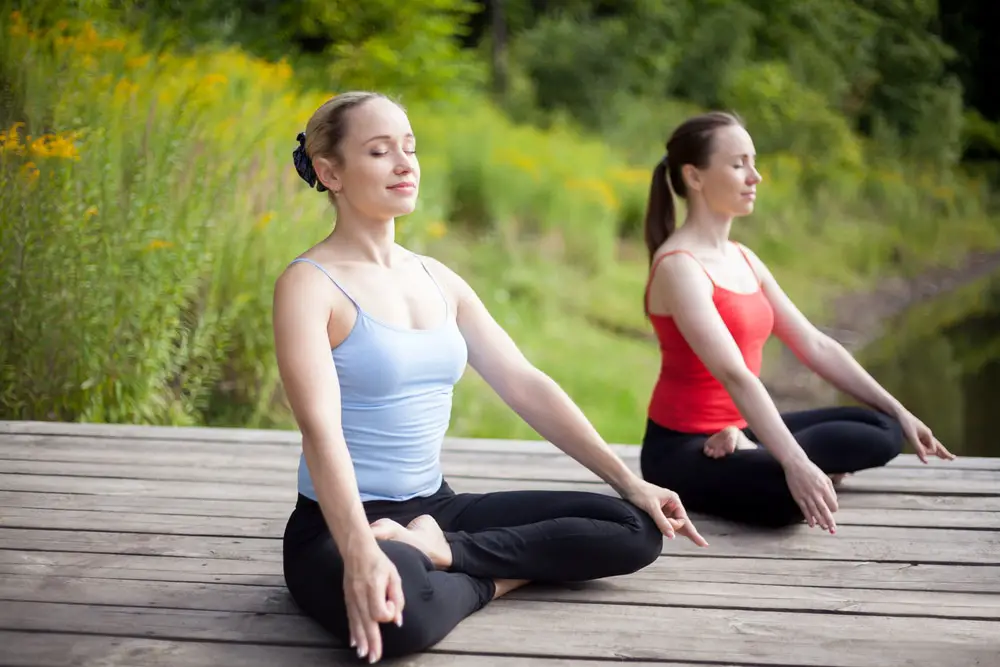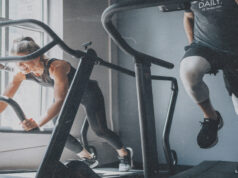Did you know that yoga is over 5,000 years old? What’s more amazing is how it was passed down orally through generations. It is known for its unique way of movements and breathing; which can help many health problems.
 Like any exercise; start slowly, know your limits and don’t push yourselves too hard too fast. Yoga’s fluidity in movements lets painful joints glide over each other, making it a great exercise for people with joint pain. If a position isn’t comfortable to you, stop using it, or yoga can be altered to fit each.
Like any exercise; start slowly, know your limits and don’t push yourselves too hard too fast. Yoga’s fluidity in movements lets painful joints glide over each other, making it a great exercise for people with joint pain. If a position isn’t comfortable to you, stop using it, or yoga can be altered to fit each.
Be a Warrior
The supported warrior position can be described as trying to push a wall away. With your hands on the wall, step one foot forward while bending it. Count to 10 or 15 and then change feet. This can be helpful for knee pain.
“Float Like a Butterfly”
If you suffer from hip pain, try the butterfly position. Sit on the floor, bringing the bottoms of your feet together to make a diamond with your legs. Keep your back straight and slowly lower knees to the ground; add pillows to aid the knees.
Going Back to the Wall
The Wall Plank is helpful in reducing elbow and shoulder pain. It’s done like a stand-up version of a push-up. Put your hands on the wall and start leaning in as you bend your elbows. Push back when you’ve hit your limit or the wall.
Morning Stretch
Good mornings should start of by doing the Sun Salutations. Stand with your feet together, bring your hands up together palm-to-palm and lay them at your heart. Raise your hands as you exhale then slowly bend backward. Here you want to stretch your arms above your head. Relax your neck and inhale. Then do it again. The position stretches your spine and helps your flexibility,
Child’s Pose +1
This one is great for lower back pain. On the floor, stand on your knees while spreading them wide. When your knees are spread, you should bring your two big toes together.
Place your hips on top of your feet or knees. And then reach, reach high over your head. The Pose +1 is still the same position but instead of reaching over your head, reach to the ground. These moves stretch the spine and hips, while improving flexibility.
Get Angry Like the Cat
The Angry Cat sounds what it looks like, a cat upset or scared. Get on all fours on the floor and pull your navel up to round your spine, arching away from the ground. This is the opposite of the Cow Pose, where you push your navel down and stretches your spine like a rainbow shape.
Be a Happy Baby
To fight hip pain, lay flat on your back and grab your ankles with each hand. Bend the knees and pull them upward. When you get as far as you can go, start rocking from side to side. But keep your head on the floor facing upward. This will rotate and strengthen your hips and realign your spine.
Half Lord of the Fish Pose
Sit on the floor with both legs in front of you. Keep the left one straight, bend and pull the right leg in. Line up this leg so its 2 inches away from the left leg. Create a spinal twist by using your left arm over to your right leg. Try leveling out your shoulders and looking over your right shoulder. This is a stretching position that works on the lower back, spine, hips, glutes, neck and shoulders.
Garland Pose
This pose can help hips’ fluidity while stretching the lower back and knees. In fact, this pose is so helpful with hips, that many women use this position while giving birth. Standing up lining your heels to your hips and turn your toes outward. Bend your knees into a squatting position. It also stretches out ankles, lower back, and knees.
Arm Lift with Strap
Shoulder pain’s help comes by this position, Arm Lift with Strap or aka Standing Yoga Mudra. Standing with your feet hip-length apart hold a strap in one hand. As you sweep both arms behind you, pull the shoulders in to grasp the strap with both hands. Walk your hands towards each other thus creating an opening in the chest. Moving your shoulders in and out can increase or decrease that tension.
Conclusion
With so many yoga positions to choose from; find the ones that match your problem. With joint problems, yoga can strengthen, stretch and flexes easily with your joints to reduce pain. Again, try each exercise. If one doesn’t work for you, either modify it or try a different pose. When a therapy had its origins 5,000 years ago, you can imagine how well it must help.
Author Bio:
Margaux Diaz is Health and Fitness Expert. She has completed her Master’s Degree in Biotechnology from the University of Southern California. She is an inspirational writer who firmly believes in the power of self-motivation. She is also a contributor author at Consumer Health Digest since five years. To get more tips regarding health and fitness connect with her on Facebook , Twitter and Google+











